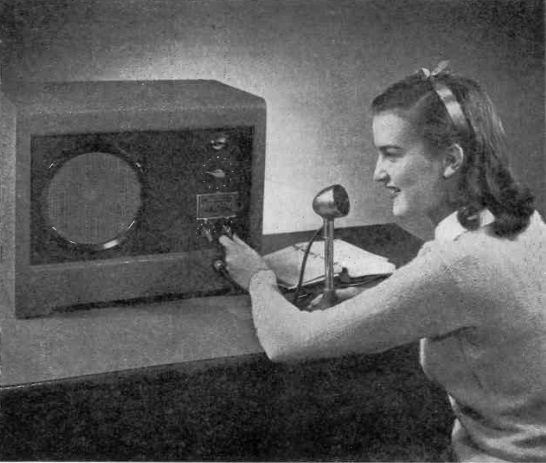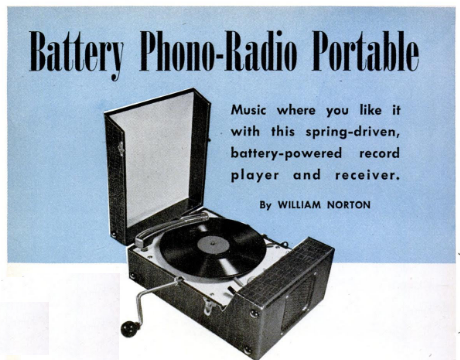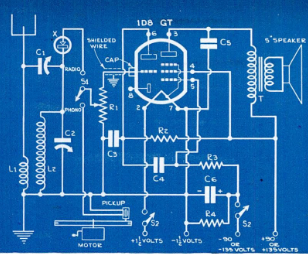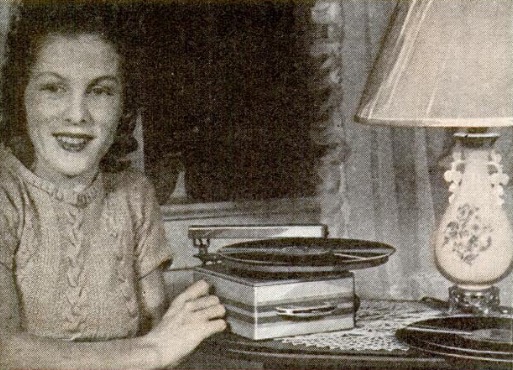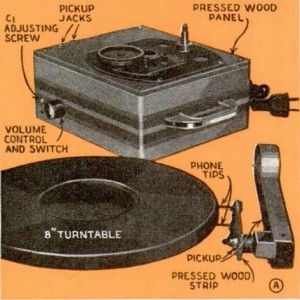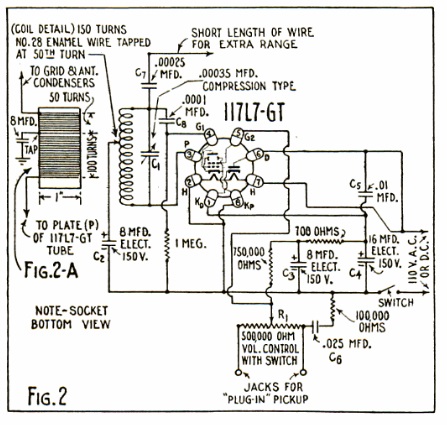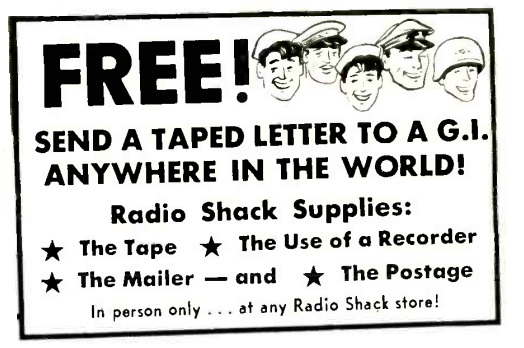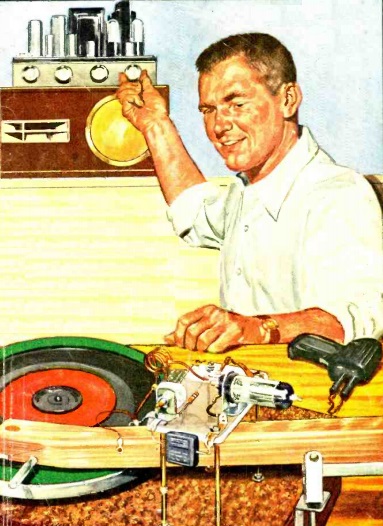
Maybe your MP3 player sounds a bit better than this gentleman’s hi-fi turntable from 60 years ago, but I bet you can’t build yours from scratch, like this guy did. This one, shown on the cover of the 1957 edition of Radio-TV Experimenter, is entirely homemade, and despite the homemade appearance, probably did sound as good or better than anything on the market at the time, and would probably have sounded good even by today’s standards.
It was actually a phono oscillator, and transmitted the signal through an FM transmitter. Since the audio quality of the FM signal was better than the recording technology of the day, the fidelity was limited only by the quality of the record.
Sound quality was paramount in every detail. As is plainly visible, the tone arm is indeed made out of wood. In particular, the wood is basswood, chosen because it had less mechanical resonance than other woods. Metal would have been inferior, because of the capacitive effect with the leads running through it.
The pickup was homemade, not as a cost-saving measure, but because the design shown here was superior to the ceramic cartridges then commercially available. It used a capacitive pickup. The only commercial component was the sapphire-tiped needle, which was pushed into a rubber plug. A copper plate was carefully positioned next to the needle to complete the capacitive pickup.
The tone arm was cut with a jigsaw, and the article contained precise instructions for balancing it.
The electronics, probably the easiest part to construct, consisted of a small FM transmitter employing a single 6C4 tube. The example shown here was to be used for 45 RPM records, but the article noted that by adjusting the size and using an appropriate needle, it could be built for 33 or 78 RPM records.


